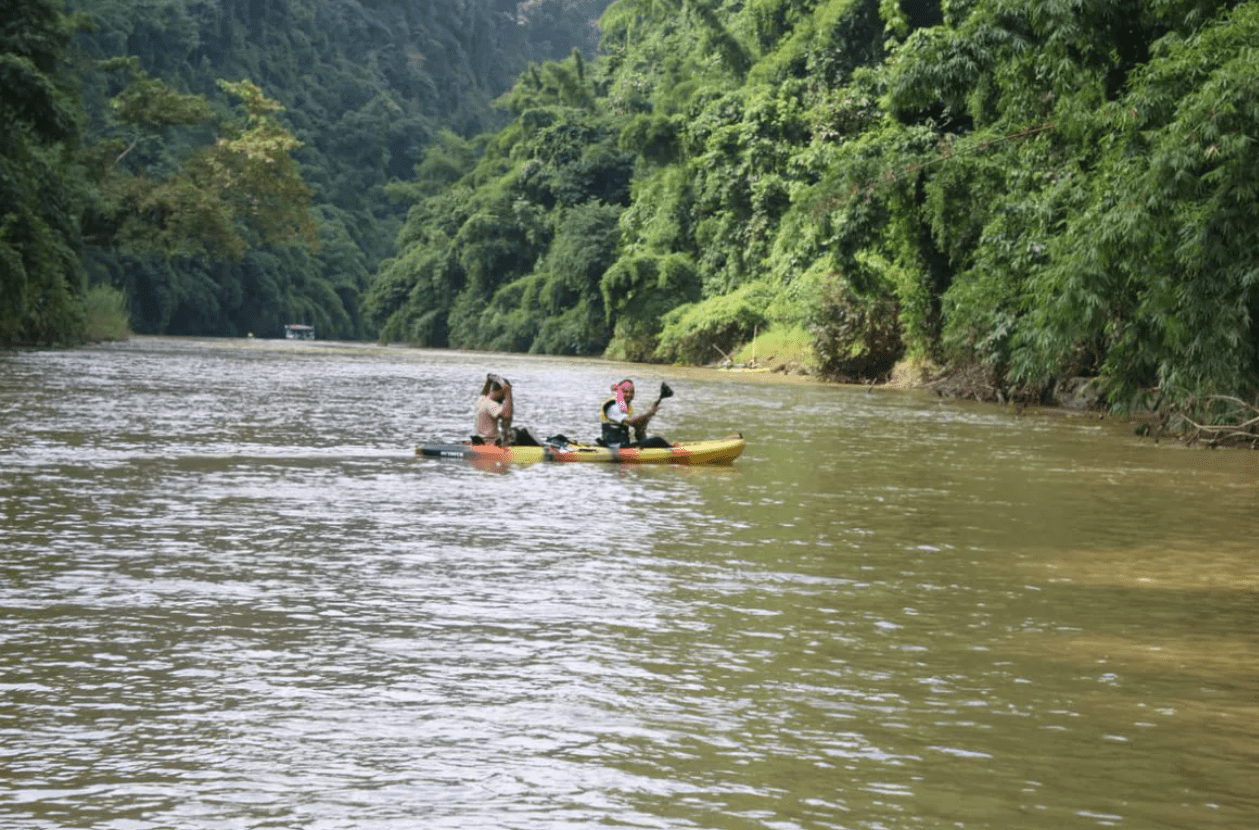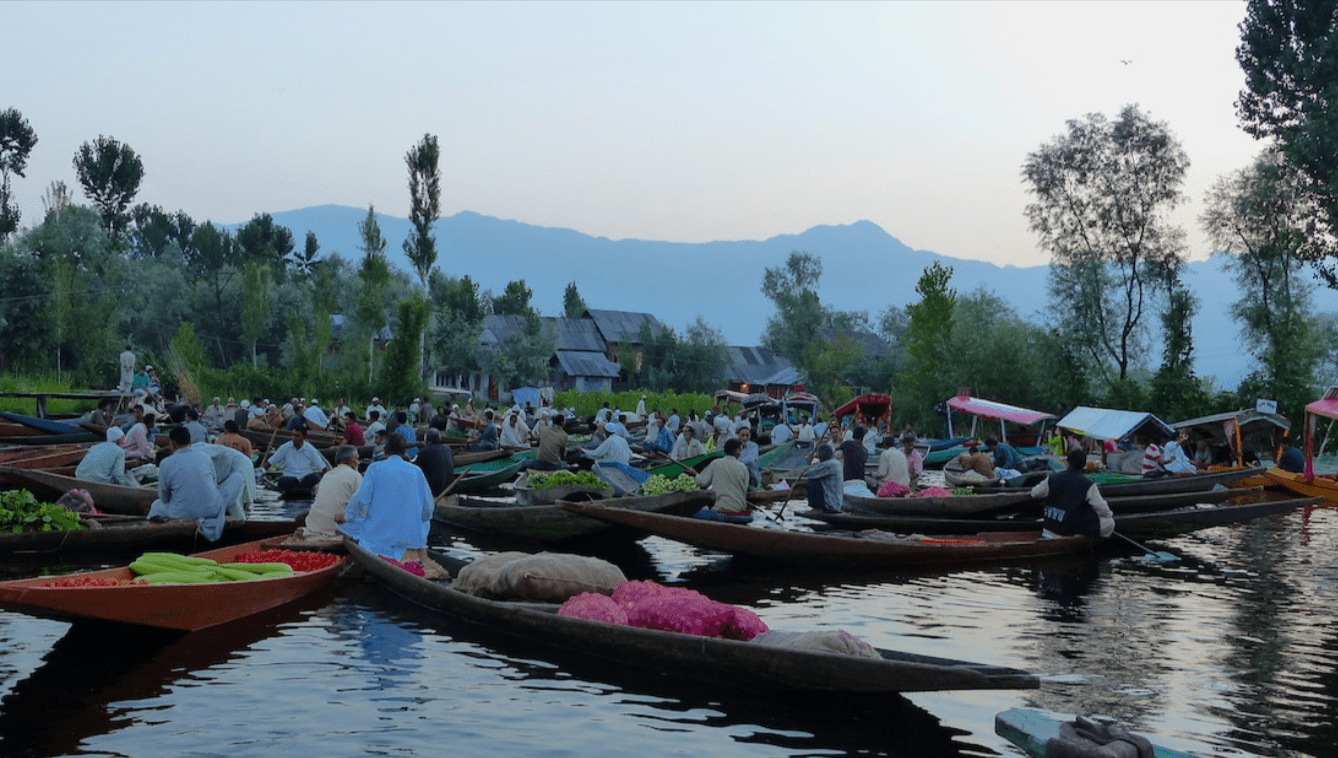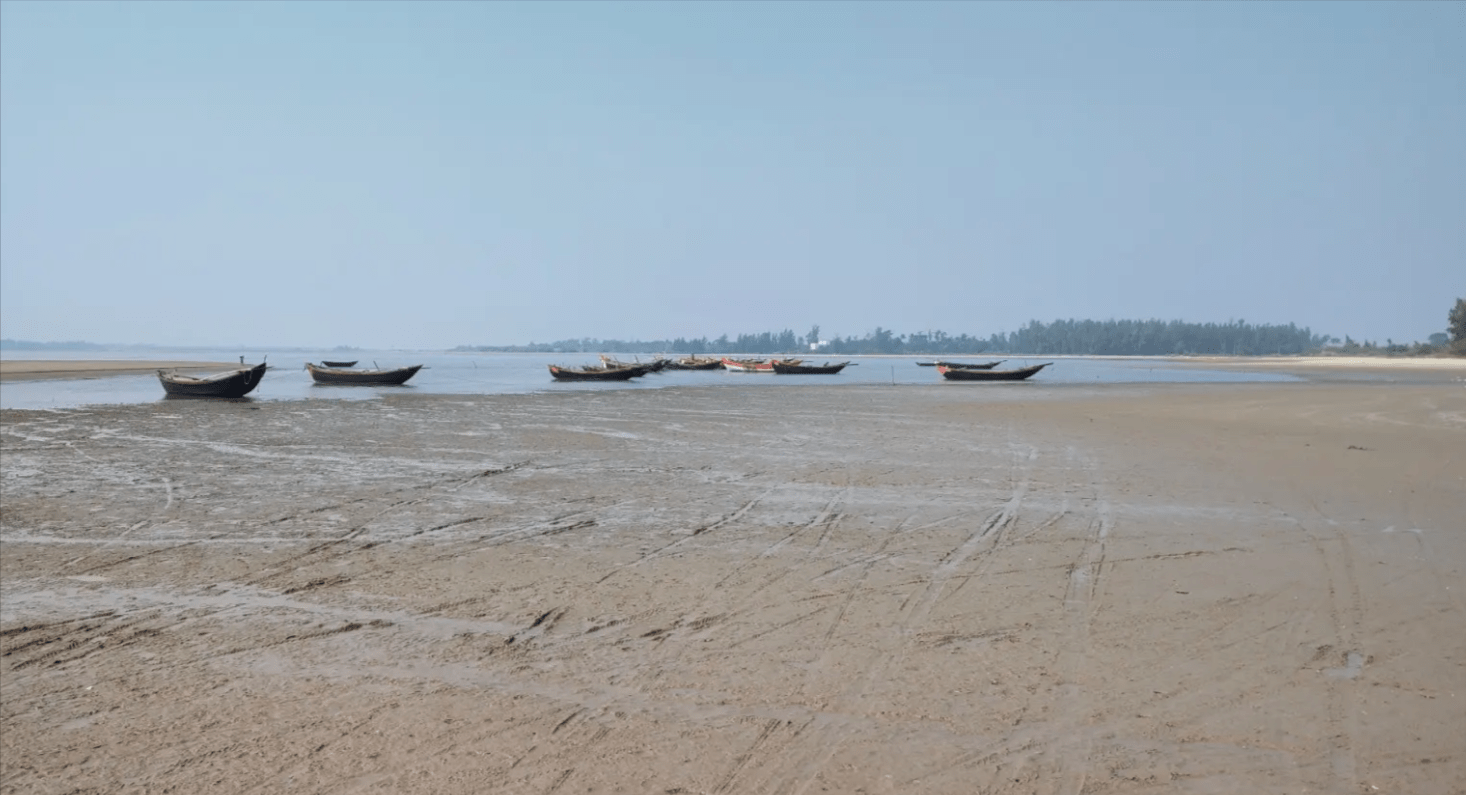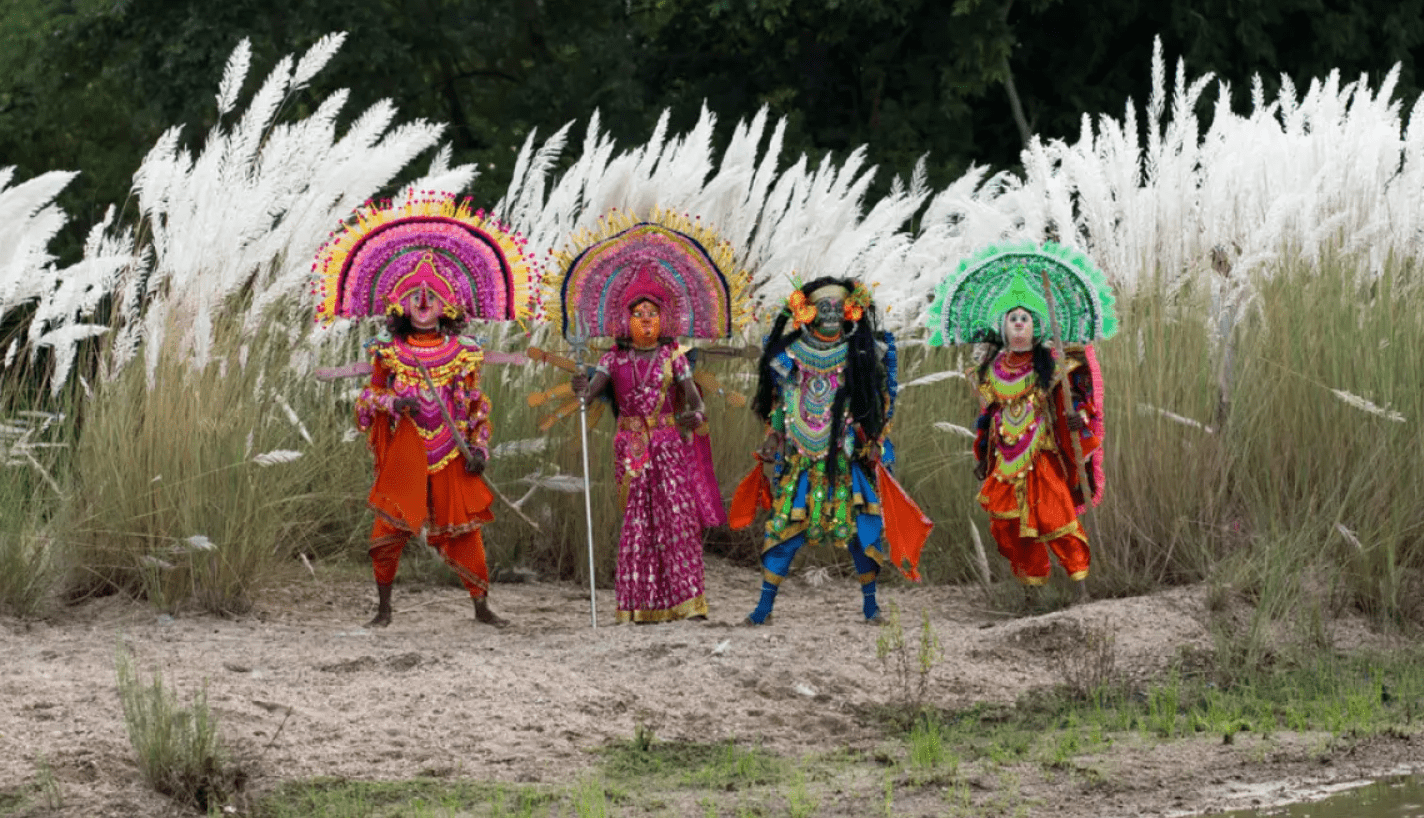Chabimura, Tripura : The Gomti River meanders through a narrow gorge, flanked by towering, rugged cliffs on either side. Upon closer inspection, we noticed several ancient rock carvings etched into the steep mountain faces. This discovery sparked numerous questions in my mind: Why are these carvings here? Who created them? These thoughts whisked me away to a bygone era, only to be snapped back to reality by the roar of our motorboat propelling us along the river. Chabimura, or Chhabimura, near Amarpur in Tripura’s Gomati district, promised further marvels. Tripura, it seemed, was full of surprises, just like Unakoti.
Admittedly, Chabimura was unfamiliar to us before our trip to Tripura. Our first encounter with this place was through a Tripura Tourism advertisement. I must commend their effort, as a single glance at the location left me utterly captivated. Despite our tight schedule, I was determined to visit Chabimura, even if it meant sacrificing a visit to Pilak, which also seemed promising. Ultimately, Chabimura prevailed, and we set out for Amarpur to explore the rock carvings.
Discovering Chabimura
Chabimura offers a rare mix of historical intrigue and natural beauty. A boat ride through the Gomti River’s gorge provides a surreal experience that’s hard to put into words. Adding to the allure are the rock carvings on the cliffs. The boat trip will take you downstream to a large panel featuring a rock-cut image of Goddess Durga in her fierce Mahisasur Mardini Avatar, locally called Devi Chakrama.
The boat ride evokes the feeling of navigating through the Amazon rainforest. Chabimura, translating to “mountain of pictures,” is also known as Devtamura, meaning “mountain peak of Gods.” The place is as isolated and enigmatic as Unakoti. While Unakoti is steeped in stories and legends, Chabimura remains an enigma with no specific historical or mythical background, which only enhances its allure.
Exploring Chabimura by Boat
Hidden deep within the forest, Chabimura features rock-cut panels of Hindu deities carved into steep cliff faces that drop directly into the riverbed approximately 150 feet below. This archaeological wonder feels like it’s situated in the middle of nowhere, surrounded only by birdcalls and the rustling of leaves.
Rock Panels of Chabimura
At Chabimura, you’ll find rock carvings on vertical sandstone faces. There are four prominent panels of these rock-cut sculptures. According to scholar Jawhar Acharjee, these carvings date back to the eighth century. The first panel we encountered depicted the Panchadevata, measuring about 9m x 5m, featuring Shiva, Vishnu, Kartikeya, Ganesha, and Devi Shakti, each with their respective vahanas as per Hindu mythology.
Further downstream, a smaller panel shows a procession of a queen in a palanquin, surrounded by 37 figures engaged in music and dance, holding various instruments.
About 500 meters further, another panel features Brishabahana Shiva holding a Damru. Finally, we reached a grand 13-meter high panel of Goddess Durga, known locally as Devi Chakrama. She is depicted with ten arms, one leg on the buffalo demon Mahisasur and the other on a lion, with her hair replaced by a multitude of snakes, reminiscent of Medusa.
A quick glance at these carvings might suggest a link to some Tantric practices, distinct from what we saw at Unakoti or Pilak. The skill required to carve these images on nearly vertical rock faces is truly remarkable.
Legends of Chabimura: The Cave of King Chichingfa
After a peculiar bend in the river, we came across a cave on the left side. According to Jamatia legend, King Chichingfa hid his treasures in large wooden chests inside this cave, guarded by a giant python. The cave includes a waterfall, and visitors are permitted only up to this point. Locals believe that further exploration is forbidden, and some who tried were unsuccessful.
Another legend tells of the Jamatia people being driven away by a giant cobra, though Hada Akra, a Jamatia religious society, disputes this, asserting that they left due to severe drought. King Chichingfa’s kingdom was reportedly located in Burtiari, to the west.
The Tale of Princess Hirabati
Our boatman also recounted the legend of Princess Hirabati, daughter of King Chichingfa. According to the story, a white elephant abducted Hirabati. Two brothers, Rangia and Fateh, battled the elephant at Tirthamukh and rescued her. King Chichingfa, grateful, gave Hirabati’s hand in marriage to Fateh. He also revealed the location of his hidden treasure in the cave, warning them to return before evening to avoid the wrath of Devi Chakrama.
Even today, locals believe no one should approach the cave after dark due to the feared wrath of Devi Chakrama. These tales add an air of mystery to the region, though their authenticity is open to interpretation.
The Boat Ride Experience
To view these historical sites, you must take a boat ride from Rangamati in Amarpur to Maharani. The ride navigates through a narrow gorge flanked by forested hills, offering views of the rock carvings and the area’s natural beauty. This region is also a hotspot for birdwatchers.
After visiting Dumboor Lake, we arrived at Chabimura in the late afternoon. We hired a motorboat and traveled downstream to see the Devi Chakrama panel. The tranquil beauty of the surroundings, with its lush greenery and calm waters, was mesmerizing. The silence and natural ambiance made it feel as if we were journeying through the Amazon rainforest.
During our return trip, we spotted a large water snake near the boat. I attempted to capture photos, but the snake was elusive. We also saw some birds but didn’t manage to photograph them.
Chhabimura (Devtamura) – A Potential Ecotourism Destination
Once a hotspot of insurgency, this region in Tripura now shows promise for tourism. Despite its mention in tourism advertisements, Chabimura remains under-promoted. The local self-help group manages the boat rides, and there’s a small museum with information and photographs about the site. A recent foreign news team visited for a documentary, though details remain unclear.
Overnight stays are not allowed at Chabimura; the cottages available are for daytime use only. Rates are Rs. 200 per hour per cottage, guide charges are Rs. 100 per hour, and boat rides are Rs. 150 per person. Renting an entire boat costs around Rs. 1100-1200, depending on negotiations.
How to Reach Chabimura
Chabimura is accessible by road from Udaipur via the Amarpur state highway, about 26 km from Udaipur. Buses can take you to Amarpur, and from there, it’s another 10 km to Debtamura Hills, the starting point of Chabimura, via a village road.
The ancient rock carvings at Chabimura are invaluable treasures that need protection. While the current four panels remain neglected, proper excavation might reveal more. Chabimura holds great potential for both domestic and international tourists, and increased governmental support could help preserve its heritage and boost tourism.



